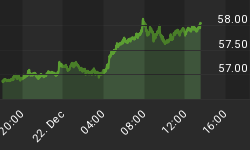Signs Of The Times:
"Don't worry, market dip only temporary."
"The world is still in a low-inflation boom, driven by supply-side expansions. This environment is inherently bullish for growth-oriented assets, and the recent financial turmoil hasn't changed the backdrop."
- Bloomberg, August 11
Bank Credit Analyst
The problem with this approach is that even when "managed" by supply-side armchair quarterbacks, at cyclical peaks the economy lags stocks and financial markets.
Over the past week, the latter have taken another dramatic step towards a cyclical credit contraction. Despite conventional wisdom, credit contagion has disturbed two other bastions of complacency.
Money-market desks got hit as dealer commercial paper, which had been between 5.27% and 5.30% since October, jumped on Friday from 5.27% to 5.50%. With this Libor which had been around 5.36% for the same time, jumped to 5.50% on Thursday and made it to 5.56% on Monday.
The salient feature was that with that change the treasury bill rate declined from 4.94% on Wednesday to 4.53% on Friday and to 3.60% (no typo) this morning. Bills had been under 5.00% since April from the high of 5.18% in February.
Touts about policy remedies came to fruition as senior central banks lost their complacency and coordinated an injection of more credit. This is panicdotal evidence of grave concern.
The next step in policy land will be a cut in administered rates which, if they have any market savvy, should be timed with very oversold conditions. As with many long-term investors, instantaneous gratification goes over well with the central banking crowd.
As history shows, short-dated market rates of interest increase with a boom and decline with the consequent contraction. It should be emphasized that if it is necessary to consider causal relations, the boom causes the contraction. Typically these follow the reversal from an inverted to a steepening curve. In this example this occurred in May, which signaled the time when the wheels would begin to fall off the most blatant speculations.
It is also worth noting that at the conclusion of the greatest booms since the 1860s that typically the senior central bank has been a number of months behind the decline in market rates of interest.
The 3-month bill set its high at 5.18% in late February and the initial decline made it to 4.53% in mid June. The test of the high reached only 5.00% on July 24. This was associated with the attempt to rally New York through 14,000, and for example, to rally copper and crude to higher highs.
Some will, no doubt, claim that the recent decline is anticipating a "managed" decline in Fed funds that will ignite another buying panic, but history is graphic about this - the biggest bear markets have been followed by the greatest declines in short-dated interest rates - with market rates leading the way.
As for policymakers leading the way, or merely reinforcing natural trends and their reversals in the market place - the poet, W.B. Yeats might not have had central bankers in mind when he wrote, "How do you tell the dancer from the dance?"















